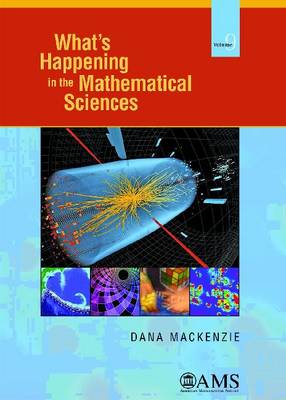What's Happening in the Mathematical Sciences looks at some highlights of the most recent developments in mathematics. These include the mathematics behind stories that made headlines, as well as fascinating mathematical stories that never made it into the newspapers.
In 2009, a flu pandemic, the world's first in more than 40 years, tested a new generation of mathematical models that take some of the guesswork out of public health decisions. As health officials rushed to quell the outbreak of H1N1 flu, mathematicians were working just as hurriedly to answer questions like these: Was the epidemic serious enough to justify school closings or quarantines? Who should be vaccinated first, the elderly or the young? Their findings substantially affected the response of local governments, national governments, and the World Health Organization.
Mathematics can also help society prepare for other kinds of natural and manmade disasters. A major tsunami in 2011 in Japan, like the one seven years earlier in the Indian Ocean, highlighted flaws in our understanding of these catastrophic events and inadequacies in our early warning systems. Geoscientists are working together with mathematicians to improve our short-term forecasting ability and quantify the long-term risks of tsunamis. Meanwhile, in California, another group of mathematicians succeeded in adapting earthquake prediction algorithms to forecast criminal activity. Their ""predictive policing"" software was tested in Los Angeles and is being adopted by other cities across the United States.
Fortunately, not all mathematics has to do with emergencies. Pure mathematicians have been busy cleaning out their closets of long-standing open problems. In 2012, two conjectures about different kinds of minimising surfaces were solved: the Willmore Conjecture (minimising energy) and the Lawson Conjecture (minimising area). Also in 2012, following up on the extraordinary proofs of the Poincare Conjecture and Thurston's Geometrization Conjecture, topologists proved a collection of conjectures that ensure that three-dimensional spaces can all be constructed in a uniform way. Meanwhile, for the last ten years, a new way of understanding algebraic curves and surfaces has developed, leading to a subject now known as tropical geometry. With the new ideas, certain hard problems in algebraic geometry suddenly become easy and certain ""mathematical mysteries"" of string theory begin to make sense.
In physics, the nine-billion-dollar search for the elusive Higgs boson finally bagged its quarry in 2012. This discovery, one of the most widely publicised science stories of the year, provides experimental evidence for the ""Higgs mechanism,"" a nearly 50-year-old mathematical argument that explains how certain subatomic particles acquire mass.
Rounding out this volume are chapters on a new statistical technique called topic modelling, which is breaking down the academic barriers between math and the humanities, and new discoveries about mathematicians' (and a lot of other people's) favourite toy: the Rubik's Cube.
- ISBN13 9780821887394
- Publish Date 30 May 2013
- Publish Status Out of Print
- Out of Print 24 April 2021
- Publish Country US
- Imprint American Mathematical Society
- Format Paperback
- Pages 136
- Language English
